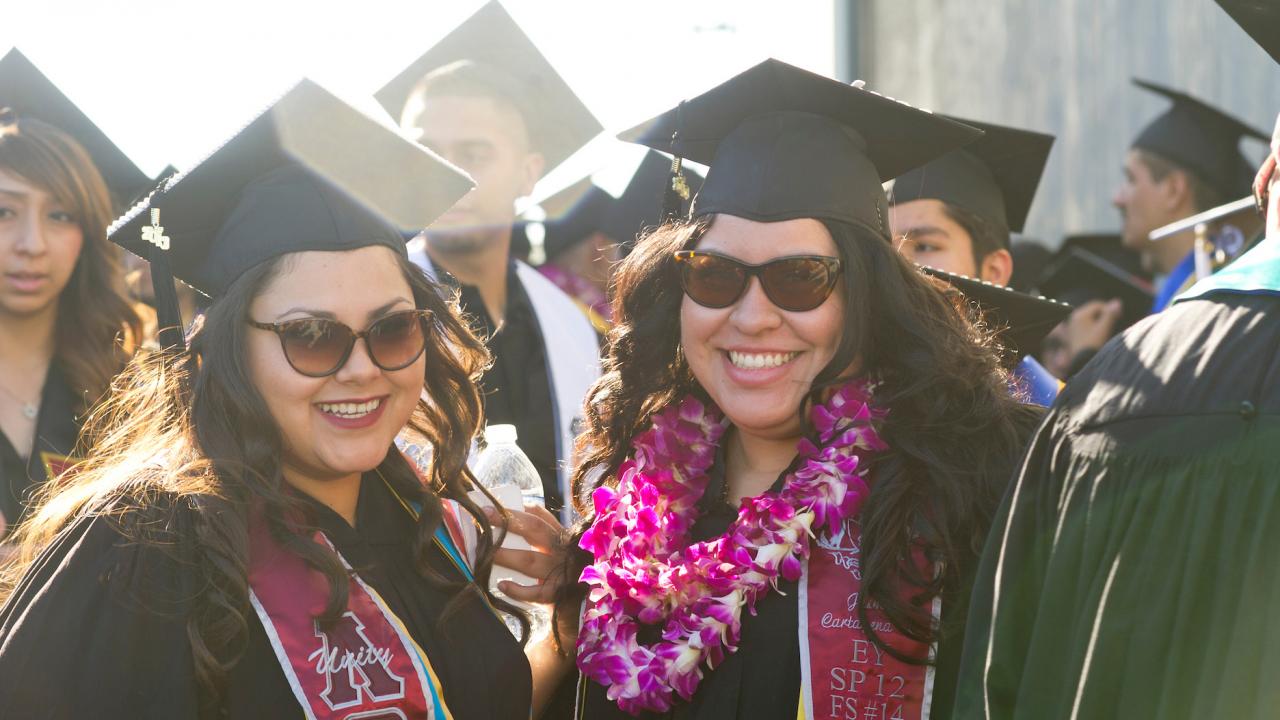Chancellor Gary S. May is pleased to announce that UC Davis has met the requirements to be eligible for Hispanic Serving Institution (HSI) designation status. Being HSI eligible, as defined by the federal government, means that the student population has enrolled 25 percent of its domestic undergraduate students from economically disadvantaged populations.
The university has submitted an application to the U.S. Department of Education for the official designation, which would then allow the university to apply for federal grants to support students with more programs and aid. UC Davis expects to gain HSI designation in spring 2019.
“UC Davis has worked hard over many years to reach eligibility status,” said May. “This has been a community effort, from faculty to alumni to staff, and one we take great pride in, and one we’ll continue for years to come.”
Once designated an HSI, UC Davis will be one of only nine other campuses that are considered R1 universities, meaning they have the highest level of research activity for undergraduate and graduate students. Five of these R1 universities are also part of the University of California system.
Over the last decade, UC Davis has developed dozens of programs that focus on outreach to and recruitment of economically disadvantaged students. It has established a series of student success centers, including one for Latinx and Chicanx students, to support, mentor, retain, inform and graduate students. The First Generation Initiative helps first generation students — who make up 46 percent of undergraduates and 72 percent of Chicanx and Latinx students — create a sense of connection, particularly through faculty and staff who began as first generation students. The annual Cesar Chavez Youth Leadership Conference reaches junior high, high school and community college students, as well as parents, who learn from professional role models to help plan for their future careers.
There are many other programs, activities and clubs dedicated to supporting prospective students throughout the state and current students, including transfer students.
In 2017, UC Davis was ranked ninth by Washington Monthly magazine for universities with contributions to the “public good.” The magazine defined “public good” as social mobility (recruiting and graduating low-income students), research (producing cutting-edge scholarship and Ph.D.s) and service (encouraging students to give something back to their country). In 2015, The New York Times ranked UC Davis as No. 2 on its list of universities serving as an “upward-mobility machine” for students (the other UC campuses rounded out the top five). The ranking is based on the share of students receiving Pell Grants, graduation rates, and net cost to students of middle- and low-income families after receiving financial aid.
UC Davis already has more than 20,000 alumni who identify as Chicanx and Latinx, most of whom still live in California.
In the coming weeks, Chancellor May will establish a task force to define what success should mean for an HSI R1 and public land-grant university in California, a state where 53 percent of high school graduates are Latinx. The task force will also consider ways to continue to improve the success and well-being of our current students and identify the resources and reforms necessary to achieve these goals.
Media Resources
Dana Topousis, UC Davis Strategic Communications, dtopousis@ucdavis.edu
